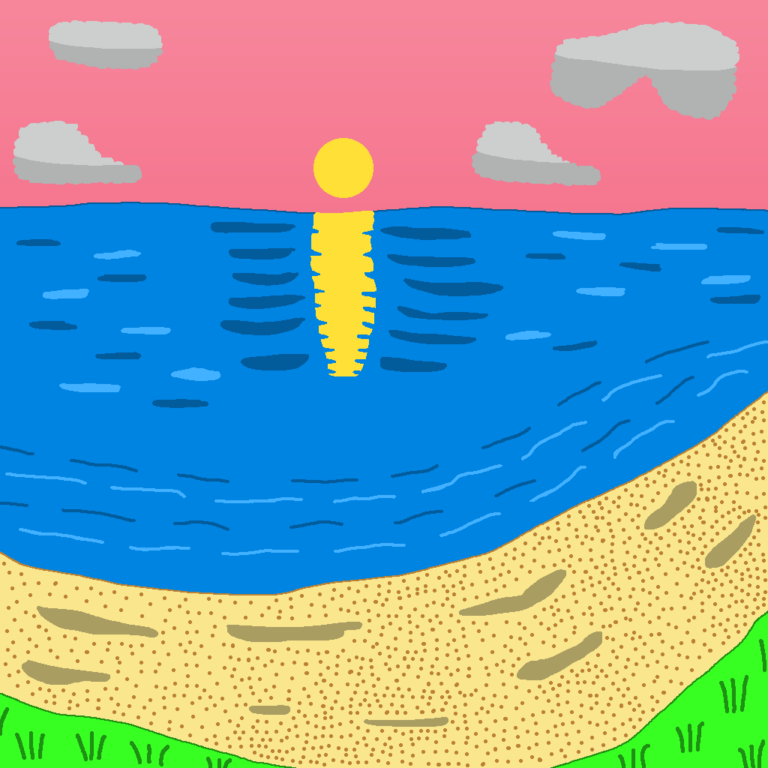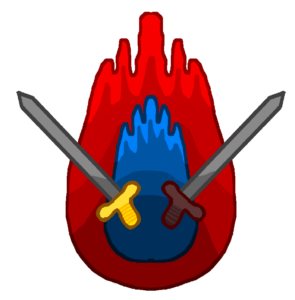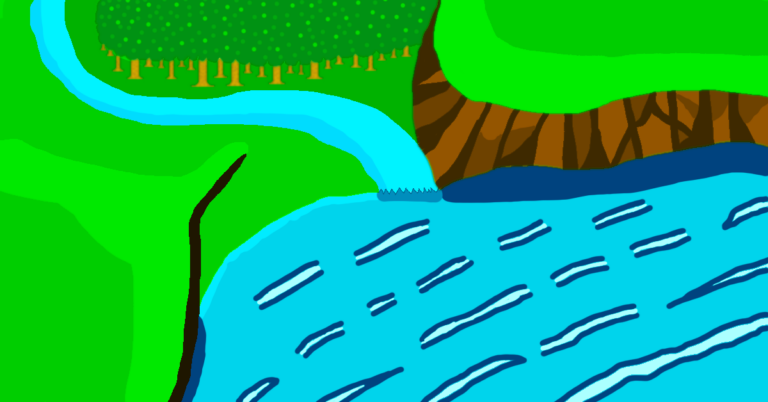Join US
Do you want to build the fantasy world you’ve always dreamed of?
Subscribe to receive notifications when a new post is out and for our monthly newsletter!
You can always unsubscribe anytime.


The man sweltered through the heat and humidity of the jungle but when he made it out on the other side, he was greeted with a cool, gentle wind. He looked left and right and saw nothing but pristine sand. In front of him loomed the ocean. He had no intentions of crossing it. Instead he would go up and down the sand. The traveler was on one of many fantasy coasts.
Out of all the different environments, the coast is unique in that it has no singular terrain feature. When you think of a mountain, you picture one. Same with forests, hills, and so on. Instead it has several different ones and the landscapes create interesting coastlines.
While they border oceans, acting as the bridging points between water and land, coasts are so much more than that. They’re vibrant areas that play an important role in the world.
The role they play depends on where they’re located. In cold areas, they don’t see much traffic but they host lots of animals like seals and penguins. In warmer climates, they’re a powerhouse, serving as access points for ships and other animals.
With the different varieties of fantasy coasts comes a different set of creatures. This makes exploring each one of them fun for no two coasts have the exact same animals. Where they’re found dictates what animals you can find there.
You might be wondering, how important are the coasts to the story? Well, they do appear in a lot of works but they play an important role in pushing it forward. Remember that they bridge water and land.
That means that ships wanting to come onshore must go through them and what’s usually on ships besides cargo? People or more specifically a large group of people. That’s right, coasts are usually where an army from a different land arrives with the intention of conquering a country. Wouldn’t you know it, many books and video games depict a great army landing on a coast, determined to wage war on their enemies.
This is the fourteenth in the series analyzing the various types of fantasy environments. As always, if you’re enjoying this series and want to read more, you can find more on our blog page.
Let’s take a walk on the beach and see what the coast has to offer, shall we?
What sets fantasy coasts apart from the other environments is that they have multiple terrain features. This is one of their greatest strengths, for they give creators the opportunity to combine different types to create amazing coasts that inspire people.
These are just a few you can come across:
And there’s even more! With all these coasts, the possibilities to combine the different kinds are nearly endless! For instance, you could have a long stretch of beach end with a series of cliffs. Or you could have grass that leads into a forest located right next to the ocean. The sky’s the limit when it comes to your imagination!
One thing to keep in mind when working with fantasy coasts is to put the terrain type you’re using in a place that make sense. For example, if you have one in a polar region, you wouldn’t want to put a lot of grass there because there’s barely any in such a cold area.
Coasts are known for their long sandy beaches. You see this in many warm places, especially in the tropics. The tropics are known for their abundant sunshine which is why so many people like to swim in the water and suntan. The same holds true in fantasy (I’m sure there’s people who like suntanning in a make-believe world).
Another thing fantasy coasts are known for is how rocky they are. Whether it’s from mountains or cliffs, the rockiness attracts attention, even more if right next to a beach or grass. The hardness of the rock contrasts sharply with the gentle, smooth beach and grass which makes for a captivating visual display.

Even though fantasy coasts have many different terrain types, each type has its own set of animals. This makes exploring them fun, for each one of them offers something only unique to them.
When you think of coasts, crabs, seagulls, and so comes to mind. But you find them in warm places on beaches and grasslands. You may find the gulls in mountains, hills, and cliffs right next to the ocean but you don’t see many, if any crabs in these areas.
River coasts have more fish like salmon and tuna than usual, which attracts sharks and other predators. They wait at the mouth of the river, knowing that it’s just a matter of time before their prey comes out and then they pounce. Whenever you see sharks near the beach or any other coast, it’s because they’re searching for their prey, and are usually just passing through.
You see furry animals in coasts, though it depends on the terrain type. Forest coasts have adorable critters like squirrels and bunnies. While they have deer, you can also see them in hill coasts.
Don’t forget that fantasy coasts have their share of insects. Mosquitoes plague the beaches and grasslands whereas beetles dominate jungle coasts. Bees populate the forests and occasionally the mountains.
Just as before, where they are in the world dictates what animals you’ll come across. This makes them interesting, for you never know what animal you’ll see.
If you opt to create an entirely new creature and you want to place it on a coast, be sure to put it in an area that works. Even though it’s fantasy, the audience still expects animals to match the place they’re in.
Fantasy coasts typically serve one major role in the story — and several others — and it’s where a group of ships dock and many soldiers rush out, all garbed in battle armor. Having one army invade the land of another is a popular storyline in the genre; you see this all the time but the conflict is usually between two neighboring nations.
When it’s between different lands or parts of the world, the stakes are higher which makes for more tense moments. In many fantasy worlds, sailing the high seas is the only way to get from one continent to another. When one kingdom from a continent decides to wage war on one on another continent, instead of it being a regional war, it becomes a great war. The war can quickly descend into a global war as more kingdoms take sides.
As such, fantasy coasts serves as the launching point for the invasion; they mark an important turning point in the story as there’s no more going back. This forces it to move forward, with war becoming the dominant plot for the time being since nobody knows how it’ll turn out or what changes it’ll bring.
Besides being used mainly as a place for great armies to arrive by boat, fantasy coasts serve other functions in the story as well. They can provide scenic backdrops for romantic scenes where the hero professes his love to his love interest or farewell scenes where someone’s leaving to go to another land.
These scenes are filled with suspense; the audience waits with bated breath to see what the love interest’s answer is or if the person who left will ever come back. Coasts are superb environments for such scenes to take place in, for their serene beauty helps fuel how hard these scenes hit for the audience.
Fantasy coasts are exciting environments. There’s alway something going on, whether it’s seeing ships cruising by or seeing the little crabs scurry about on the beach. And there’s even more!
They contain a wide array of landscapes. Creators have nearly infinite combos to work with, the trick is to figure out where each one fits and have a seamless transition between them. Even though you’re creating a fantasy world, it’s essential you work diligently to make everything harmonize perfectly. Work on making great, dynamic coasts that your audience will love!
There’s no shortage of exotic animals on fantasy coasts. Each one of them brings something to the table that no other does. The animals you create and place in the coasts all contribute to their ecosystems. While it’s a fantasy world, these animals are key to worldbuilding, even more if they’ll show up in your story.
Speaking of which, the coasts play a significant role. The story is constantly marching forward and changing over time. Ships full of armies landing on beaches show that the story going forward will be dramatically different than it was before. In some ways, it’s the end of an era and the beginning of the next one.
In the end, fantasy coasts are a part of the world and you should endeavor to bring them into the world you’re building. You’ll have created some incredible places that your audience will love and want to come back to again and again!
Let me know what you think in the comments below. (Note: this is an account-exclusive feature).
If you don’t have one, you can register here. It only takes a few moments of your time!
Liked this article and want to subscribe? All you have to do is fill out the form below and that’s it!
Thanks for reading this and until the next time,
Sunfire
Subscribing means you receive:
You can always unsubscribe anytime.
Do you want to build the fantasy world you’ve always dreamed of?
Subscribe to receive notifications when a new post is out and for our monthly newsletter!
You can always unsubscribe anytime.